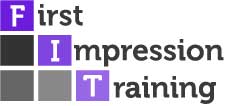Running a successful customer service operation that’s frontlined by a top-notch team, whose prime focus is on ensuring a world-class 10/10 experience for its customers, is a lot like learning how to dance…
Before you can Cha-Cha-Cha and Foxtrot your way around the dancefloor, you need to learn the steps.
While there are exceptions to the rule, like 2019 Strictly winner Kelvin Fletcher, most of us are more like Ann Widdecombe – awkwardly keeping our heads down and focusing on our feet. The problem is, when you do this, you’re not aware of your surroundings – you’re just thinking about how you look and listening to the rhythm of the music.
Sure, looking down and counting the steps out loud may help you crack the routine, but you’re not going to receive any 10s from Craig Revel Horwood!
The same principle applies to customer service.
If you don’t start listening to feedback and looking where you’re going, in order to improve and develop and enhance your customers’ experience, it can have a detrimental impact on your long-term success as a world-class service provider.
You’re not going to become a Dame Darcey Bussell or a Kevin Clifton unless and until you stop, look, listen and respond to the sound and rhythm of your customer – what do THEY want from you? How can you ensure THEY receive a 10/10 experience whenever they partner with your service?
Nowadays, there are so many things that you need to focus on when it comes to improving your customer’s experience and creating loyal fans. Technology has created greater expectations from customers, while the pandemic has left most of us up s**t creek without a paddle!
It’s a constant battle to keep customers happy and loyal. Just one poor experience and you could find yourself quickstepping to your local Job Centre.
If we’ve learnt anything from the past few months, it’s that there’s strength in collaboration and that competition is fierce. We’ve seen print companies coming together to manufacture PPE equipment for NHS staff and banks introduce a more flexible repayment approach for its customers. However, we’ve also seen many restaurants and retailers closing multiple sites.
While the latter isn’t a reflection on their level of customer service, it’s a stark reminder that tougher times are on the horizon. Just like when you’re learning to dance, you must be aware of your surroundings and listen to meet rising expectations. Otherwise, you could find yourself bumping into one too many obstacles or failing to give the dazzling experience your customers demand.
What do customers want?
Customers want quick, accurate responses to their queries and the choice of channels to ask them. According to Eptica’s latest Digital Customer Experience Study, poor service costs the UK economy £33bn every year!
It appears there’s simply no room for mistakes, with the internet giving customers more choices and reasons to try another company.
Customers like the freedom to move between channels seamlessly and expect similar levels of performance on each. For instance, Eptica’s findings reveal that 52% of customers want a telephone call to be answered or an online chat session to begin inside five minutes.
They also demand consistent answers through every channel. Yet, when customers asked the same question on email, Facebook, Twitter and online chat, none of the companies surveyed was able to provide the same answer on all four channels.
There seems to be a dis-integration between channels where businesses aren’t paying attention to the facts and listening to the multi-channel approach customers expect.
The need for speed is incredibly inconsistent too. On average, it takes businesses around 41 hours and 36 minutes to reply to a customer query, 1 hour and 36 minutes via Twitter and 36 minutes on Facebook.
Looking ahead, you need to introduce steps in your process aimed at listening to your customers and making your business more flexible to move with current trends.
This starts by running Voice of the Customer programmes, conducting a deeper analysis into their needs and acting on the insights you discover.
Investing in further staff training is another positive step as well, especially when it comes to addressing the need to deflect customer queries.
To many, the term deflection sounds like you’re avoiding or blocking someone. However, there are times where deflection is a powerful technique to help customers get the best (accurate) answer in the fastest way possible.
This may involve rerouting an email query or call to a self-service/FAQ page or chatbot solution. Or for complex cases, the best action may involve referring them the other way to a specialist advisor in your customer service team.
The main thing to remember is that customers don’t care how they get the answer. They just want to get it quickly and accurately. If they don’t, your competitors will benefit.
So, now isn’t the time to keep your head down and assume customers are going to put up with sub-par customer service. Instead, it’s time to look up, listen to the changing customer demands and move more fluently to meet expectations.
Otherwise, your frontline operation is going to fall harder than Bruno Tonioli’s infamous Strictly chair incident.
Until next time – keep FIT!
Best regs,
Marie x



















